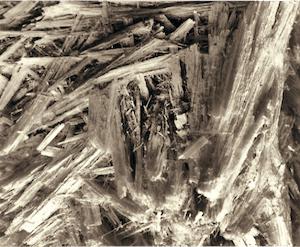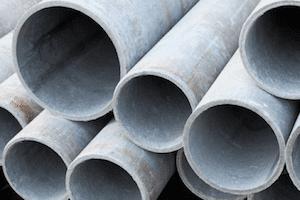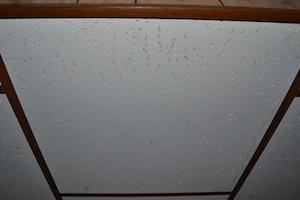What is the Difference Between Friable and Non-Friable Asbestos?
Webster’s defines friable as: easily crumbled or broken up.

Asbestos is dangerous when it becomes airborne. Breathing in or swallowing asbestos particles is what leads to a host of asbestos diseases including lung and stomach cancers and terminal mesothelioma.
Friable asbestos is asbestos containing materials where the asbestos fibres are not encased or encapsulated so that the asbestos fibers can more easily be released into the air. Friable asbestos materials are those that can be easily crumbled by pressure no more than hand pressure; no tools required.
Example of friable asbestos products include (but are not limited to):
- Textured paints and decorative ceiling (popcorn) coatings;
- Spray on insulation (limpet spray);
- Insulation on hot water pipes, heaters and stoves that has not been coated with non-porous material;
- Heat-resistant fabrics;
- Damaged asbestos cement products;
- Asbestos rope gaskets for ovens and wood stoves.
Non-friable asbestos products are less dangerous as the fibres have been bonded with cement, vinyl, resin or other polymers that encase the asbestos and keep the particles from becoming airborne.
Over 95% of the asbestos products remaining in homes and businesses today are considered to be non-friable asbestos. If they are left alone they do not pose a danger.
Examples of non-friable asbestos products are:

- Floor tiles;
- Vinyl sheet flooring;
- Thermal boards around wood stoves and fireplaces;
- Cement pipe;
- Firebricks;
- Roofing shingles;
- Wallboard;
- Attic Insulation.
It is possible to turn a non-friable asbestos product into a friable asbestos product by scraping, sanding, crushing or otherwise dismantling the item. This is why it is so important to have testing done if you have any suspicion that your house contains asbestos before you renovate.
Ceiling Tiles
Canada is a country with a long history of do-it-yourself finished basements. During the 60’s and 70’s when a family needed more space, a rec room and extra bedrooms in the basement was the solution. Weekend handymen flocked to hardware stores and building centers and were met with mountains of advice regarding how they could be the hero of the home by following a few simple how-to brochures. Drop ceilings to hide all that wiring, plumbing and duct work were high on the list, followed closely by wood paneling.

Drop ceilings installed during that time period tend to still be in the houses when they were installed. The wood paneling is gone or painted but the drop ceilings remain. They are the product in homes which may be both non-friable and friable depending on their handling. If there are left alone, they pose little risk, however moving them aside to get to the services above the ceiling be it plumbing or electrical, means popping the ceiling tile up or out. This movement releases dust from these old brittle tiles when they get bumped or scraped across each other. The dust contains asbestos particles and that is now considered to be friable asbestos with the particles easily inhalable.
To encapsulate the asbestos in ceiling tiles they need to be painted on all sides and edges. This poses a hazard as well as causing an expense larger that replacing them with new non-asbestos containing products. If you choose to have the ceiling tiles replaced, this needs to be done by a contractor familiar with handling asbestos products as the drop ceiling grid also needs to be carefully cleaned to removed accumulated dust before new tiles are installed.
If you house was built before 1980 expect that there is asbestos and build abatement into the renovation budget. Getting testing done before the work starts helps to keep your project on track. There are many asbestos testing labs in Canada and the fees for testing samples are reasonable.
If you do run into asbestos during a renovation project, document your exposure. The chances of becoming ill are minute. Given that it is not possible to know for many years if being exposed to asbestos, even for a very short time has caused a problem, it is a good idea to keep photographs and a documentary record.
If you worked with any form of asbestos before December 1982 and have been diagnosed with an asbestos related disease there are compensation options available to you. We would be happy to answer any questions you may have. Call 877.430.3383 extension 224 between 9:00 a.m. NDT and 6 p.m. PST or fill our contact form and we will respond as quickly as possible.








